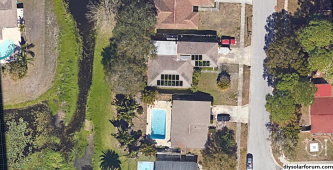SonicXtasy
New Member
Hi Guys, new to solar but want to get solar soon to help offset my last $609 electric bill. I want grid tied with the ability to sell back to the grid if I make excess (sell back is allowed with my power co) and battery backup on everything except the big things like the main 3.5 ton A/C (I also have an 18K mini split I want on back up) oven, dryer and hot water heater.
My roof doesn't allow for the largest array but may be enough. I am in a subdivision and have no room to ground mount. My electric usage ranges from 1442kwh in January to 3200kwh in August/September.
I have been in contact with signature solar and had one of their quotes but have decided I think I will need more panels and am willing to up the budget.
One of my requirements is that no electronics are mounted outside. The Florida heat and humidity will shorten the life span of micro-inverters and optimizers mounted at the panels. I will give up some efficiency to not have to worry about parts on the roof going bad in a few years.
My signature solar quote consisted of 19 Solarever 455 watt panels and hardware, the EG4 18KPV all in one inverter and 3 EG4 Lifepower4 batteries. I want to keep electronics as simple as possible and use an all in one. I also may want to wait for the new EG4 PowerPro wall mount battery(s).
I think I will need to add solar to the front of my roof to meet my needs,
I will build the system however it need to be to pass but ultimately I want 2 panels in the house for back up simplicity. A main panel that my grid feeds and has all the large items I don't want on battery back up and then that panel will feed into the 18KPV and its output would feed another panel that has the rest of the house. If I generate enough PV it will back feed to the first panel and help power those items and hopefully have enough to back feed the grid. When the grid goes down the 18KPV should automatically disconnect back feeding the grid which would also disconnect the large electrical items I don't want on battery back up.
Am I on the right track? Is there any other equipment I should be looking at or avoiding? Thanks

My roof doesn't allow for the largest array but may be enough. I am in a subdivision and have no room to ground mount. My electric usage ranges from 1442kwh in January to 3200kwh in August/September.
I have been in contact with signature solar and had one of their quotes but have decided I think I will need more panels and am willing to up the budget.
One of my requirements is that no electronics are mounted outside. The Florida heat and humidity will shorten the life span of micro-inverters and optimizers mounted at the panels. I will give up some efficiency to not have to worry about parts on the roof going bad in a few years.
My signature solar quote consisted of 19 Solarever 455 watt panels and hardware, the EG4 18KPV all in one inverter and 3 EG4 Lifepower4 batteries. I want to keep electronics as simple as possible and use an all in one. I also may want to wait for the new EG4 PowerPro wall mount battery(s).
I think I will need to add solar to the front of my roof to meet my needs,
I will build the system however it need to be to pass but ultimately I want 2 panels in the house for back up simplicity. A main panel that my grid feeds and has all the large items I don't want on battery back up and then that panel will feed into the 18KPV and its output would feed another panel that has the rest of the house. If I generate enough PV it will back feed to the first panel and help power those items and hopefully have enough to back feed the grid. When the grid goes down the 18KPV should automatically disconnect back feeding the grid which would also disconnect the large electrical items I don't want on battery back up.
Am I on the right track? Is there any other equipment I should be looking at or avoiding? Thanks





